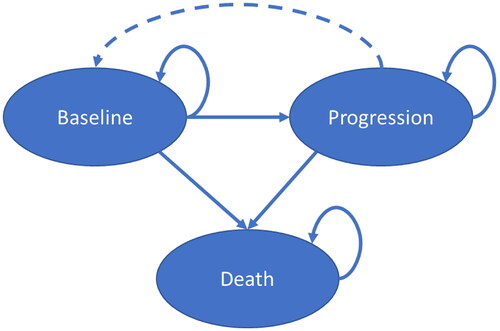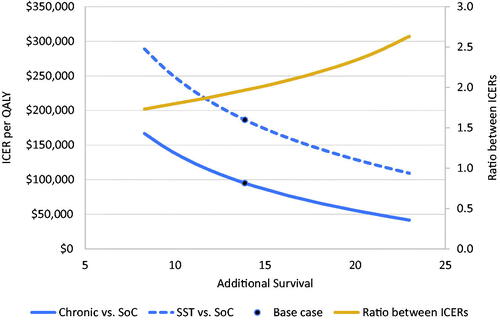Figures & data
Figure 1. Model structure. Patients can only transition from progression back to baseline with treatment.

Table 1. Input values.
Table 2. Impact of discounting and timing of treatment for the base case.
Table 3. Impact of varying discount rates on ICER per QALY.
Figure 2. ICER per QALY for both hypothetical therapies with varying survival gains. Gold line represents the difference in value. Abbreviations. ICER, incremental cost-effectiveness ratio; QALY, quality-adjusted life year; SoC, standard of care; SST, single or short-term therapy.

Table 4. Impact of discounting on “value-based” pricing.
Supplemental Material
Download MS Word (13.8 KB)Data availability statement
Qualified researchers may request access to the data that support the findings of this study from Sarepta Therapeutics Inc., by contacting [email protected].
